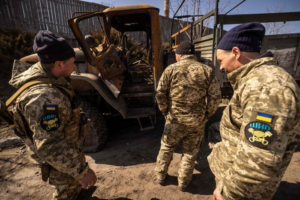

Cumulative rainfall, Wednesday through Thursday afternoon

Cumulative rainfall, Wednesday through
Thursday afternoon

Cumulative rainfall, Wednesday through
Thursday afternoon
Residual rain from Hurricane Ida hit the Northeast. Despite early forecasts suggesting 3 to 6 inches for the day, the region was walloped by the post-tropical cyclone. At least 40 people died in the region amid tornadoes, record-breaking rainfall, flash flooding and power outages.
The large weather system spanned from Baltimore to Boston Wednesday, dropping at least 2 inches of rain on 58 million people. Isolated areas saw up to 10 inches of rain.

A man waded through the flooded Major Deegan Expressway in the Bronx in New York on Thursday.
Photo:
Spencer Platt/Getty Images
The intensity of the storm caught officials and commuters off guard. The Philadelphia and New York City corridor experienced rain rates of 2 to 3 inches per hour. Newark, N.J., recorded 3.24 inches of its 8.44 inch total between 8 p.m. and 9 p.m. In Central Park, 3.15 inches fell in an hour, the highest amount on record.
When declaring flash-flood guidance, the National Weather Service said that less rainfall is required to produce flash flooding in urban areas.

Torrential rains dump high volumes of water within a few hours. The deluge on higher ground can then flow downhill into a stream or river.
Flash flooding can occur within minutes following a rainstorm, often catching victims off guard.
The river quickly rises, overflowing its banks.
The swift-moving floodwater reaches residential areas with little warning, trapping people in homes and other buildings.
Vehicles, trees and other large objects are often swept into the flow, posing another danger to anyone in the path of the fllood.
With high levels of runoff due to the concentration of buildings and other infrastructure, urban areas are particularly prone to flash-flood damage.

Flash flooding can occur within minutes following a rainstorm, often catching victims off guard.
Torrential rains dump high volumes of water within a few hours. The deluge on higher ground can then flow downhill into a stream or river.
The river quickly rises, overflowing its banks.
The swift-moving floodwater reaches residential areas with little warning, trapping people in homes and other buildings.
Vehicles, trees and other large objects are often swept into the flow, posing another danger to anyone in the path of the fllood.
With high levels of runoff due to the concentration of buildings and other infrastructure, urban areas are particularly prone to flash flood-damage.

Flash flooding can occur within minutes following a rainstorm, often catching victims off guard.
Torrential rains dump high volumes of water within a few hours. The deluge on higher ground can then flow downhill into a stream or river.
The river quickly rises, overflowing its banks.
The swift-moving floodwater reaches residential areas with little warning, trapping people in homes and other buildings.
Vehicles, trees and other large objects are often swept into the flow, posing another danger to anyone in the path of the fllood.
With high levels of runoff due to the concentration of buildings and other infrastructure, urban areas are particularly prone to flash-flood damage.
Write to Max Rust at max.rust@dowjones.com
Copyright ©2021 Dow Jones & Company, Inc. All Rights Reserved. 87990cbe856818d5eddac44c7b1cdeb8
















